Matt Adams and Yotam Tepper, my fellow archaeological collaborators, have been doing a great job with the excavation team. Presently I'm comparing the GPR results from the last seasons with the excavated grids that have been set up for this season's ground-truthing excavation. Excavations revealed Roman period water pipes, several cobbled floors, a quarry, and walls. We're still hoping to find other corroborations from the geophysical data (published paper in the Journal of Archaeological Prospection.)
Stay tuned to hear the results as they emerge. It's really quite exciting!
Here are some pictures from the morning at Legio.
Check out that Roman water pipe in the center of the 1st picture, the Roman roofing tiles in the red bucket, and that tile next to the shovel lying in the ground in the 3rd pic on the right. That's actually part of an 'F' for the Latin Ferrata, part of the Roman legion's name.
Tel Burna - a New Geophysical Survey Project

Here I am with the June 2013 Tel Burna Archaeological Crew
Lots of fun and new this year, is Tel Burna, where we opened the season.
Earlier this summer we started a new geophysical project at Tel Burna, a Bronze and Iron Age site (13th – 7th c. BCE) located in the Shephelah breadbasket region of the southern part of Israel. It has been suggested by scholars to be the Biblical Libnah. Libnah is mentioned in the Old Testament as an Israelite desert camp that Joshua encamped and fought against (Joshua 10:29-31; Joshua 12:15). Later it was given as a city to the children of Aaron, it joined the Edomites in a revolt against the King of Judah, and finally during the reign of Hezekiah, Libnah was besieged by Sennacherib (2 Kings 19:8, Isaiah 37:8).
Itzick Shai is the Director of the Tel Burna Archaeological Project, and a dear colleague from my doctoral studies at Bar Ilan University. We both completed our PhD's roughly during the same period. He has a blog that is constantly updated, so please check it out! The blog is found here: telburna.wordpress.com/about
Today the tel has a flat-topped shape, has an extensive size, and there are clear casemate wall fortifications dating to the 7th c. BCE surrounding it. What is unique about the site from an archaeogeophysical perspective is that we seem to only have a few occupation layers at the site, making it an ideal site for a case-study in archaeogeophysical method. So far silos, floors, a Late Bronze period cultic area, figurines, and other great artifacts have been excavated at the site.
During the first week of excavations CRASL completed a GPR survey in Area B, closest to the cultic area. We're aiming to track the continuation of several walls present in the adjacent excavated grid, and see what other new features we can find. We're still post-processing the data and our recommendations will help decide on new excavated areas for the coming seasons. Additionally, we'll be publishing papers over the next year with the results and gaining funding for further excavations at the site. We're hoping to start working on the casemate fortification wall next year.
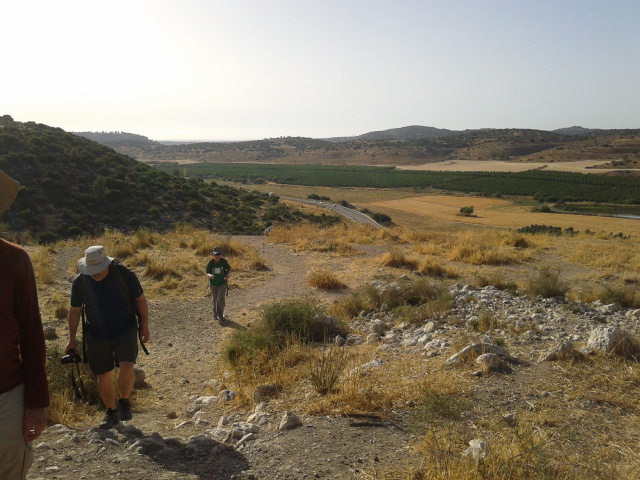
Exploring the Shepela June 2013 |
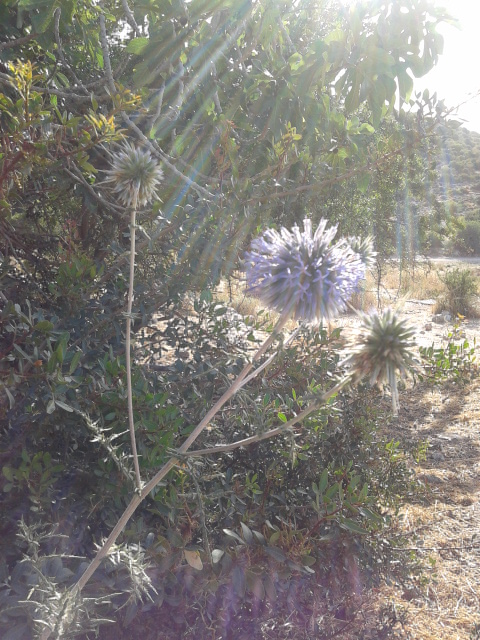
Everything's beautiful on the tel |
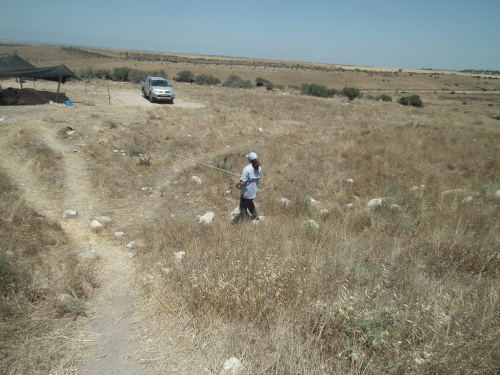
Marking GPR Survey Area at Tel Burna June 2013 |
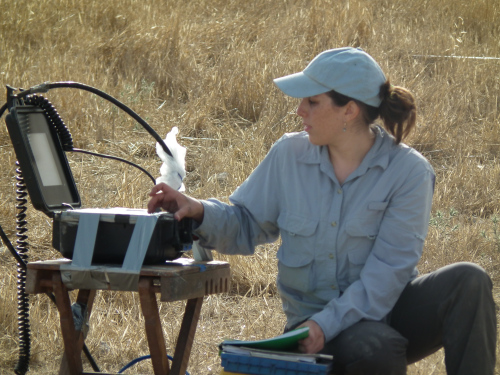
Jessie executing GPR Survey (courtesy of Itzick Shai) |

Some of the walls we're tracing in the GPR data |
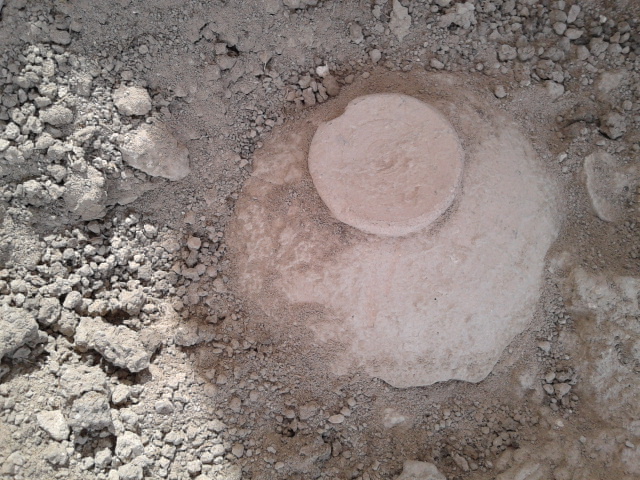
Discovering pottery at Tel Burna June 2013 |
Above you can see part of the area we surveyed with GPR this year,
and the crew, and an example of some of those walls we're tracing in the GPR data.
See full GPR report from Summer 2013 season here.
See GPR depth slice animation here.

Stay tuned here for more updates!

